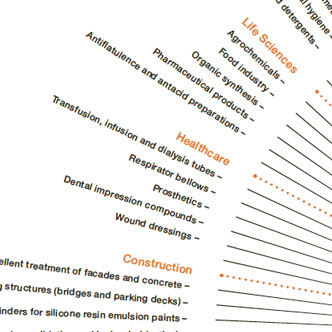Estimates and Assumptions Used in Preparing the Consolidated Financial Statements
The preparation of the consolidated financial statements in compliance with IFRS necessitates assumptions and estimates affecting the amounts and the reporting of the recognized assets and debts, income and expenses, and contingent liabilities. These assumptions and estimates comply with the conditions and appraisals prevailing on the balance sheet date. In this regard, they also impact the amount of income and expenses reported on for the fiscal years in question. The assumptions on which the estimates are based relate primarily to the uniform determination of useful lives throughout the Group, the ascertainment of fair values of financial instruments, the recognition and measurement of provisions, the realizability of future tax benefits, and determination of discounted cash flows made in connection with impairment tests and purchase price allocations.
In individual cases, the actual values may differ from the assumptions and estimates that were made. Changes in value are recognized as soon as they become apparent and affect the net results for the period when the change occurred and, if applicable, in future reporting periods.
Intangible Assets and Property, Plant and Equipment /Investments in Associates Accounted for Using the Equity Method
The expected useful life of intangible assets and of property, plant and equipment, together with their amortization / depreciation schedules, are based on past experience, plans and estimates. This includes estimates of the period and allocation of future cash inflows derived from the investments made, as well as future technical advancements and ongoing replacement and development cycles.
Impairment tests are performed for assets if specific indicators point toward a possible impairment loss or reversal of an impairment loss. In the case of a possible impairment, an estimate must be made of the recoverable amount of the affected asset that corresponds to the higher of either the fair value less costs to sell or the value in use. When determining the recoverable amount during the impairment test, it is necessary to make estimates based on share prices, on prices of comparable transactions, or on the net present value method or other valuation methods or combinations thereof. That, in turn, calls for estimates and assessments by management. To ascertain the value in use, the discounted future cash flows of the affected asset must be determined. The estimate of the discounted future cash flows contains significant assumptions such as, in particular, those regarding future selling prices and sales volumes, costs, and discount rates. Although WACKER is assuming that the estimates of the relevant expected useful lives and of discounted future cash flows, as well as the assumptions regarding the general economic conditions and the development of the economic sectors are reasonable, a change in the assumptions or circumstances might necessitate a change in the analysis. This could result in significant deviations from the figures posted, which may lead to additional impairments or reversals of impairment losses. See Note 04
Financial Instruments
Financial instruments are recognized at fair value, while other assets and liabilities are disclosed at fair value in the notes to the financial statements. Calculation of the fair value of financial instruments may require making extensive estimates. The level of estimates is determined by the extent to which non-observable input parameters are taken into account. When calculating fair value, WACKER strives to include as many observable input parameters as possible and to keep the use of non-observable factors to a minimum. If the fair value cannot be reliably determined, the carrying amount is taken as an approximate value to determine fair value.
In accordance with IFRS 13, financial instruments that are measured or recognized at fair value in the consolidated financial statements must be measured and classified according to the fair value hierarchy. This hierarchy consists of three levels, to which the input parameters are assigned in accordance with the extent to which they are observable during the corresponding measurement process. See Note 18
Provisions
Significant risks inherent in environmental protection provisions and in provisions for damages and onerous contracts are possible changes in future cost / benefit estimates, changes in the likelihood of their utilization, and enhanced statutory rules concerning the elimination and prevention of environmental damage. Changes in the discount rate also lead to changes when determining noncurrent provisions. The current environment of low interest rates leads to increases in the carrying amount of noncurrent provisions. See Note 12
Pensions and similar obligations are accounted for in accordance with actuarial valuations, which are based on statistical and other factors in order to anticipate future events. The factors include the discount rate, expected salary and pension increases, the mortality rate and rate increases for preventive healthcare. If market and economic conditions change, these assumptions could vary considerably from actual developments, consequently leading to major changes in pension and similar obligations, as well as the associated future expenses. In particular, the current environment of low interest rates had an impact on the carrying amount of pension provisions. See Note11
The pension-obligation amount is determined by discounting the WACKER-specific, expected future cash flows. The discount rate is derived from the yield curve of high-grade, fixed-interest corporate bonds with maturities matching the pension obligations, as calculated at the balance sheet date. The bonds are all denominated in the same currency as their underlying pension obligations and have a rating of at least AA from one of the three major rating agencies. In Germany, the basis is a bond portfolio determined as of the closing date using Bloomberg and with a maturity that nearly matches the maturity of the pension obligation.
Provisions for uncertain tax positions are established whenever the probability of their occurrence exceeds 50 percent. WACKER reassesses contributions to provisions for uncertain tax positions annually, based on past experience.
Deferred Taxes
At the end of each reporting period, the Group assesses whether the probability of future tax benefits being realized is sufficient to recognize deferred tax assets. Among other things, this requires that management evaluate the tax benefits resulting from currently available tax strategies and future taxable income, as well as taking additional positive and negative factors into account. In the case of companies that have posted tax losses in the past, deferred tax assets are capitalized only in exceptional cases if substantial indications of their realization exist.









